Garlic has won the leading positions around the world due to its specific aroma and sharpness. Experienced hostesses use this spice not only to improve the taste of dishes, but also as an antiviral agent.
On store shelves, you can find a wide variety of garlic varieties, but the quality of such a product is questioned. The real taste of the spice can only be obtained with its own cultivation. If you correctly approach the issue of landing and care of garlic in open ground, you can collect a large harvest of high-quality product.
Summer garlic - what the difference from the winter view
First of all, the types of garlic should be distinguished. In this question, you do not confuse, as they are only two - winter and spring. But even with such a small number of plant species, you should know how to distinguish winter garlic from the spring.
- The name of winter garlic speaks for itself - he is sitting in late autumn for the winter. The teeth grow large and arranged in one row around the stem. But, despite the big harvest, such a garlic is kept no longer than 4 months.
- Much more interest in gargrin causes a spring grade of garlic. You can determine it by a large number of teeth, which are located near the spiral rod. This type of plant has more pronounced taste and is stored up to 10 months, and some varieties can remain fresh for about 2 years. But here is the yield of summer garlic low.
- The head of spring garlic slightly flashed, from which the slices got a more convex form in the center. The color of flakes of the bulbs have a shade from dark purple to white. Therefore, this factor in determining the type of garlic is not determining.
- The leaves of the stem is narrower and long than that of winter garlic. In size, they can reach 1 cm. In width and up to 1 m. Height. Each subsequent sheet grows from the previous one, thereby forming a false stalk plant.
- Seed arrow forms a spiral with inflorescence at the end in the form of a bowl. The fruit forms a box, which does not actually contain the seeds of a toned garlic. The reproduction of the bulbs occurs with the help of teeth, with the exception of the decorative plant variety. But winter garlic can be raised both from the poles and from the seed.
- You can visually figure out the plant in the form of a plant:
Yarovar garlic:
Winter garlic:
What are the varieties of spring garlic
To collect a big yield of summer garlic, it is important to choose its variety correctly depending on the climatic conditions of the landing area. It is important to do, because so this kind of plant is very sensitive to changing weather conditions.
- The dates of ripening point to the grade of garlic. In total, they are distinguished by three: late and early, as well as the secondary. Do not determine the type of plant by the ability to form arrows. So, if you plant garlic in areas with a cool climate of fake grades, then the arrow is not formed. And, on the contrary, with hot weather, a non-stirring kind of garlic can throw out the arrow with flowers.
- Many novices-gobblers are often wondering: "Is it possible to plant a spring garlic under the winter"? Although this type of plant can save its root system during freezing, it is necessary to plant it only in the spring season. Otherwise, the teeth will not be able to gain strength and aroma.
How to plant spring garlic in open ground
- A significant disadvantage of open soil is the inability to protect the soil from freezing. It is also impossible to affect the decrease in the temperature regime. Summer garlic does not respond poorly to the change in the temperature of the soil, which means that the time should be correctly selected for its landing.
- The teeth should land in the spring when the Earth has already warmed up, but has not yet become dry under the influence of high temperature. After all, it will not give the root plant of the plant, from which the growth of the bulbs will stop or slow down.
Choosing a soil for the cultivation of spring garlic
- The cultivation of spring garlic is desirable to spend on loyal soils. Such soil is considered the most fertile for this type of plant. Sugglock has high loosening due to the content of small lip pieces in it and large grains. It gives the opportunity to air and moisture as much as possible to the ground. Such a soil is rich in necessary minerals to feed garlic.
- Also to ensure the full development of the plant will suit the sandy soil. It contains more sand than clay. In this case, it is important to constantly monitor the percentage of sand, otherwise its surplus will reduce the quality of the soil.
- When choosing a bed for landing of spring garlic, keep in mind that this plant does not like temperature differences. So, the place must be protected from the cold wind. Avoid low-lying sites in the garden, since it does not melt snow in them, as well as the extra moisture accumulates.
- The location of the bed depends on what kind of harvest you are planning. If you need greens for use in salads, then plant a plant in the shade. To form a fleece head, it is necessary to prepare the soil in the sunny section.
Preparation of soil before landing of spring garlic
Although the fallout of summer garlic is carried out in the spring, the garden for it needs to be prepared in the fall. Especially if the landing will be made in an open type.
- First, the Earth is drunk to the depth of the bayonet shovel. This is a prerequisite, since during such a soil procedure is enriched with air.
- At the same time, fertilizer is made on the ground. Its amount and composition depend on the type of soil, but too deeply should not mix the mixture, since the root system of the plant is located in the upper layer. At this stage, it is important to comply with the exact proportions of the soil saturation to ensure the yield of garlic. The amount of fertilizer is customary to count on 1 m2.
- So the sublinous soil does not particularly need abundant enrichment by humus. It will be enough to make up to 4 kg of humus. Additionally, you will need about 2 tbsp. l. Superphosphate and 1 tsp. urea. The number of this feeding will be equally for any soil.
- But clay soil must be diluted with river sand up to 10 kg, then make peat and humid 5 kg each.
- Supply soil needs saturation not only by humus, but also clay soil. This will reduce the amount of sand, which will make the Earth more porous. All will need one part of humus and two parts of the sublink.
- Peat soil, on the contrary, requires sand to 10 kg, depending on the peat concentration in the soil. It is mixed by humus in the amount of 6 kg.
- After adding fertilizers, the land must be treated with robbles and leave to early spring. Before landing, the soil is frozen and necessarily watering.
Preparation of spring garlic to landing
Although the preparation of fractions for disembarkation does not require special skills, the peculiarities should be taken into account.
- Most often, the landing material is purchased in vegetable stores. But much more efficient will be if you select the head from your crop. Use fruits only from the previous crop of garlic, as the bulbs during storage lose their quality for more than a year.
- For planting culture in open ground, you need to choose garlic heads of large size with numerous teeth. Those bulbs that contain little benefits are considered a degenerate plant and they are not suitable for further reproduction.
- A month before the spring planting of spring garlic, the selected onions must be shifted into a cool place. To do this, you can use a refrigerator or even snow on the garden.
- The teeth are separated from the rod directly on the day of planting. Since his Donets dries quickly, which is the reason for the decline in the germination of polek. Therefore, for high yield of culture, do not divide the bulb in advance.
- To raise a rich harvest on the heads, you should select large cloves to land. For the growth of garlic in greens or to protect other plants from diseases, use smaller sides.
- The qualitative harvest of spring garlic will be only made of healthy fruits, with a smooth husk of uniform color. Double teeth immediately set aside.
Treatment of teeth for planting of spring garlic
Inexperienced summer houses are often asked about the need to soak fractions before holding a landing in an open ground. This procedure is not mandatory. Although to accelerate the germination of the planting material, it follows the three days to complete the bulbs in the wet fabric and put them in a plastic bag.
- The main condition for the processing of robes of spring garlic is its disinfection. But it is necessary to spend it 12 hours before disembarking.
- The most common way to process planting material is the use of manganese. Prepare a solution from potassium permanganate at a concentration of 1%, soak the teeth in it for half an hour. If you wish, after this procedure, you can wrap the teeth into a wet tissue for a day.
- Copper cunes are often used for garlic disinfection. First, soak for 2 minutes the slices in the salt solution (on 5 liters of liquid, add 45 GL of salt), then shift into a solution of a permanent solution with a 1% concentration of one minute. After such treatment, the teeth can be placed immediately into the ground.
- Some experienced gardens prefer to use only natural substances, such as ash. Such a solution must be pre-welded. In a large container, pour 5 liters of water, add 450 grams of ash, barefoot half an hour. Then strain and cool down. Soak teeth for 2 hours. Before boarding thoroughly rinse garlic with warm water.
Scheme and deadlines for planting of teeth of spring garlic
- When is spring garlic? The ideal time of landing seed material is the middle or end of April. The earth must warm up slightly, and the snow is completely melted. At the same time, the air temperature for the landing of the teeth can range from 4 to 10 degrees of heat. If you delay landing to later spring, then high temperature will not give the opportunity to develop the roots of garlic, from which the heads will not have time to gain strength.
- Do not worry about young shoots of the plant. They are not afraid of low temperatures and continue to grow even at a temperature of 3 degrees above zero.
- The main rule when planting a spring garlic is only a wet soil. Therefore, if you have the earth dried, it must be poured. After the water is completely absorbed into the soil, go to the landing of the seed material.
- There is a certain planting scheme of teeth. With its observance, you will provide a place for the full development of the bulbs of garlic.
- In the garden it is necessary to make a groove, set the gap between them about 20-30 cm. Place the slippers of garlic in them, the distance between which should not be less than 7 cm. At the same time, do not immerse garlic in the ground, it should be at a depth of 2 cm.
- So that the seed material can quickly exist, do not even tamper it into the soil. From above, the teeth must be powder with a soil and only then slightly dissolve the surface.
- The first month after planting the roots of the plant is very weak, the growth is slow. But after 4 weeks, the root system begins to actively grow, which becomes noticeable on the leaves. When the greens fully formed, it begins to ripe the head of garlic. After a month, the bulb acquires its volume and then begins to recruit meaturacy.
After which plants you can plant a spring garlic
When determining the place for landing garlic, it is important to adhere to the rules of crop rotation. It can also affect the yield of the plant.
- Experienced gardeners advise every year to choose a new place for landing garlic, as the soil after its growth is not suitable for reuse by this culture, as well as after Luke with carrots. It is necessary to carry out garlic falling on such a soil after a couple of years.
- In order to hurt less garlic and brought a high harvest, choose a place for its disembarkation after growing leguminous crops on it, grains, bachchi, spices and other spicy herbs.
- The useful neighborhood of garlic will be for such cultures as: tomatoes, potatoes, gooseberries, strawberries and any flowers. This plant scares small pests with its aroma, which will allow other cultures to calmly grow. But at the same time, garlic is able to adversely affect the growth of legumes and cabbage.
How to care for spring garlic
In addition to compliance with the rules for landing of spring garlic, it is necessary to take into account the peculiarities of a plant care. With the right combination of these two conditions, you can collect a large harvest of garlic.
How to grow a yield spring garlic
- Since the young shoots of spring garlic can grow at low temperatures, then the care of it begins after the appearance of the first sprouts. It consists not only in the frequency of the soil around the plants (for saturation of the soil with oxygen), but also the right watering, as well as feeding. In addition, you will have to fight possible diseases of the plant, pests and weed grass.
- In order to rapidly water and quench the area with garlic, it is necessary to mulch the bed with a peat layer or a finished compost. Position the material tight to the soil with a total thickness of at least 2 cm.
How to carry out irrigated garlic
For the full growth of greenery and effective ripening of bulbs, it is important to properly approach the question of irrigation of spring garlic. This plant throughout the entire period of maturation needs different liquid volume.
- After the appearance of shoots and before the formation of the greenery (May - the beginning of July), garlic needs abundant irrigation. Lack of moisture or rare watering can be determined by the yellow tips of the leaves.
- During the formation of greenery in the plant you can help mulching the soil. The peat layer or the finished compost will save the soil from the rapid evaporation of moisture in hot weather, but at the same time absorbs excess moisture. Such a way to care for spring garlic will save you from frequent soil loosenings.
- In the second half of the growing season, the volume of the liquid must be reduced. Excessively moistage soil will lead to the rotting of the bulbs and plant diseases. Therefore, be attentive to ground moistening, especially during precipitation. But it is not necessary to completely stop watering. Heavily dry soil will take moisture at garlic heads during their maturation.
- During the rains, spring garlic should not be water or navigate to the degree of saturation of the soil. A day after the cessation of precipitation, the soil should be braid that the land is not covered with a crust. Otherwise, it will prevent oxygen penetration to the roots of garlic.
How to perform torn garlic
- During the growing season before the start of the ripening of the bulbs, we need to be carried out only 2 feeding plants for the full ripening of fruits. The first feeding of garlic of spring type is made upon the appearance of shoots. The second - during the beginning of the beginning of the ripening of the bulbs.
- Use the humus (korlar, bird) or any other nitrogen-containing drug as raw materials. Gumus must be breeding with water in the ratio: 1 part of the fertilizer and 10 parts of the liquid, and chemicals according to the instructions. The feeding is made on the ground only in liquid form.
Clearly observe the proportions to add fertilizer, otherwise it is an oversufficient only to spoil the teeth, and excessive saturation of fruits with nitrogen can be poisonous for your body. - In some cases, an insufficient number of fertilizers is made, which can be prompted by the plant itself. If you have noticed yellowness on greens, then you should evaluate the quality of the soil and make appropriate corrections in the number of fertilizer.
- The following feeders should be carried out during the start of ripening of garlic, to the third decade of August. During this period, the plant requires potash-phosphoric drugs. In this case, wood ash is suitable, which must be made simultaneously with watering.
When and how to tie garlic
- Young gardeners often ask the question: "When you need to tie summer garlic and whether it is necessary to do it." The process of turning the braid from the tops of garlic is a scientifically confirmed plant yield. But at the same time, experienced farmers prefer to carry out such care for garlic.
- The main function of the mating of garlic shoots is aimed at stopping the growth of greenery. In this case, all juices plant begins to give the bulb, from which the yield and health of the culture increases.
- But it is necessary to pursue such a procedure in a strictly defined period, otherwise you only harm the plant, which will reduce the juice of garlic heads and reduce the crop. Therefore, you clearly observe the days when you need to tie a spring garlic.
- If you have a sort of stern garlic swallowing, then the tissue time will indicate the straightened arrow. To avoid donomas of the plants, it is first cut, only then you need to move to the tie of the leaves.
- For most other varieties of spring garlic, zayazing must be carried out in mid-August. It is during this period that the fruit begins to gain strength.
- It is necessary to work with the leaves of garlic in gloves, since their outer side is acute and may damage the hand. During weaving braids, try to leave the stem in the initial position, so as not to spoil the bulb.
- In one hand, collect leaves together, crush them around yourself several times and tie the second hand. For a 940 cm long green. You need to tie two knots from the plant leaves, one beam will be enough for lower stalks.
How to clean the tire garlic
From the correctly chosen period of digging of spring garlic will depend on the quality of the bulbs. Too late cleaning will be the cause of the dry pulp of the teeth and the thickened bottom. At that time, if earlier digs the heads, they will be misappropriate and will not acquire sharpness.
How to determine when remove spring garlic
- The harvest time of Torry garlic falls at the end of August. But it can change depending on the variety of the plant. An explicit feature for the start of harvest is the yellowed tops, which fell on Earth. Also, if you do not have information from the manufacturer about the timing of fruit cleaning, then the factors of their maturation should be taken into account.
- Before you begin harvesting, you need to carefully examine the bulb. Slightly push the soil near garlic head. A homogeneous color and a flat surface of the husk, as well as the elastic pulp of the teeth will indicate the full ripening of the fetus.
- If this way, you could not determine the degree of ripening of the robbeans, then dig one of the flange of garlic, remove the earth and inspect it. The fully matured fetus of the husk is easily removed, and the flesh is juicy and fragrant.
Conditions of cleaning of spring garlic
- 2-3 days before the planned date of cleaning of garlic bulbs, clean the garden from the garbage and reveal them a bit. So the soil will dry from excess moisture.
- Digging garlic only in sunny weather in the early morning or evening. The bulbs are afraid of direct sunlight, and under the influence of high temperatures they can lose their quality.
- With the help of a slightly fit garlic heads, get them out of the soil and put next to the bed. Let the fruits slightly dry, so that the remnants of the earth you could easily clean the bulbs. Then transfer garlic with foliage to storage room and dry them up to 5 days. Do not allow direct sunlight on them.
How to keep a yarre garlic harvest
- When the tops of the plant becomes completely dry, it should be trimmed at a distance of no more than 10 cm. From the bulbs. The roots are also cut off, leaving them with a length of about 3 mm. Then the fruits are sorted by size and deposited.
- For storage of spring garlic, communicates with each other in small bundles or shocks in the heading bag. If you are convenient to store the fruits in the container, then it should be wooden.
- To preserve the harvest for a long time, keep it in a well-ventilated room with low air temperature (up to 20 degrees of heat). Summer garlic can be saved up to 10 months, and some varieties up to 2 years.
For a large yield of spring garlic, it is necessary to know not only the features of landing and care for it, but also the rules for the preparation of seed material, as well as the choice of time to feed the plants. To enjoy the sharpness of garlic for a long time, it should be removed correctly and ensure the necessary conditions for its storage.
More vividly about the full course of growing spring garlic in the open ground, see the video:

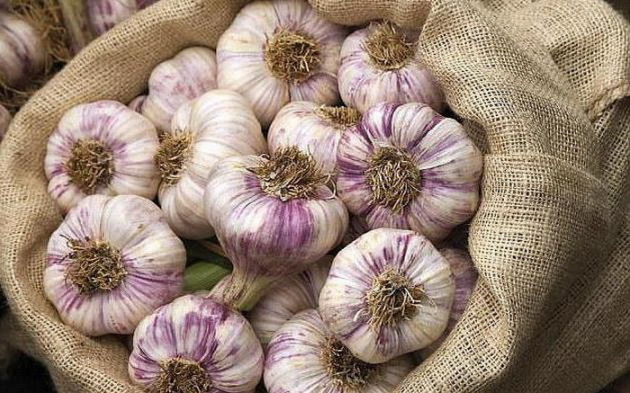
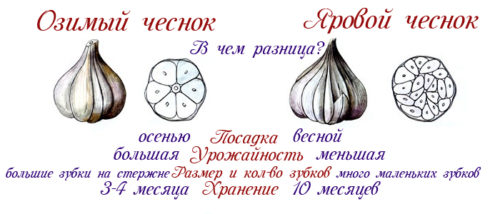
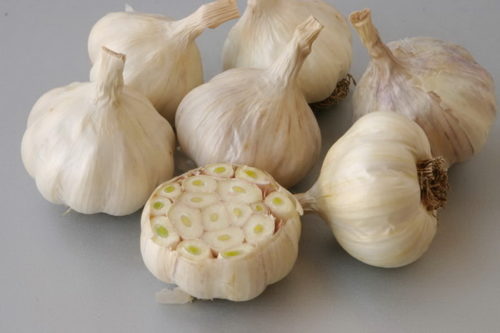
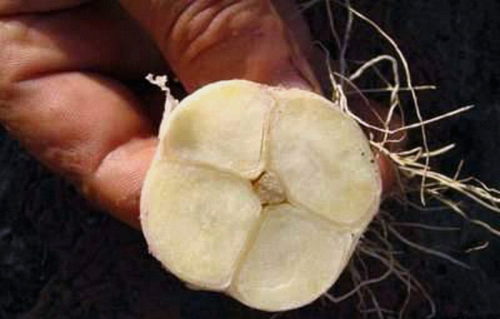

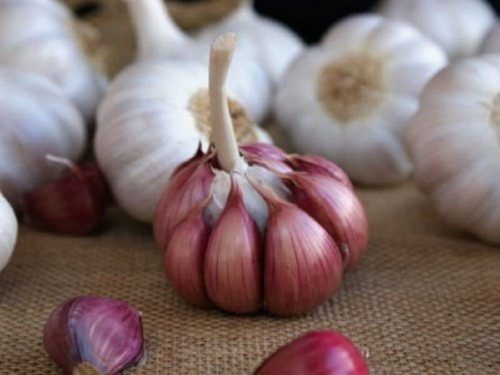
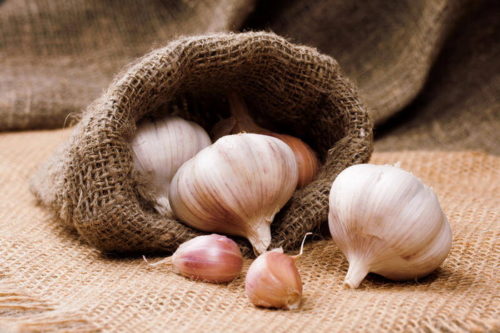
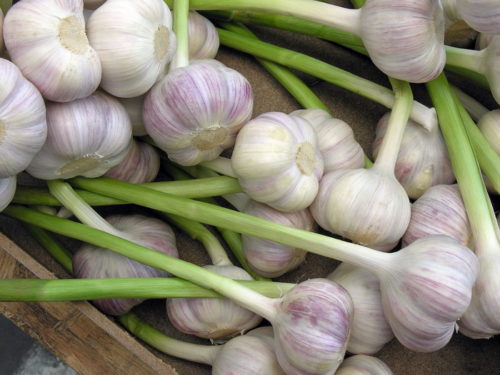
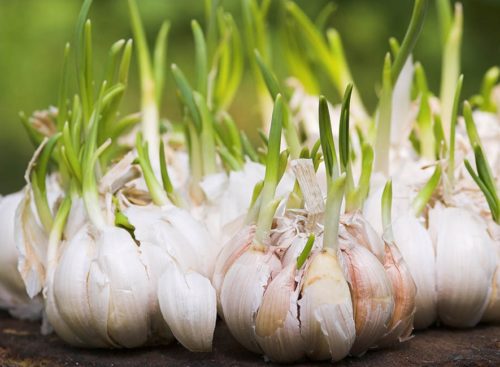
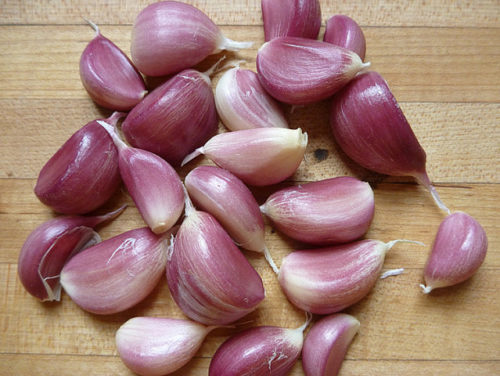
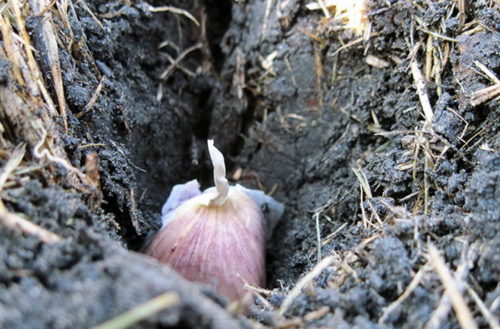

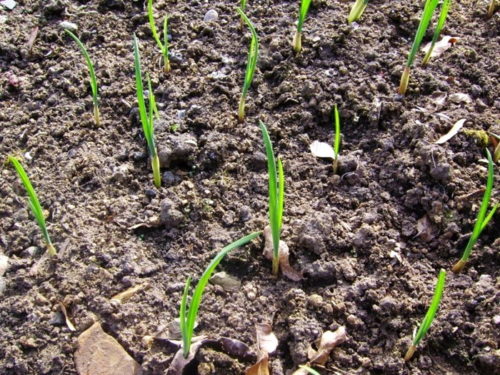
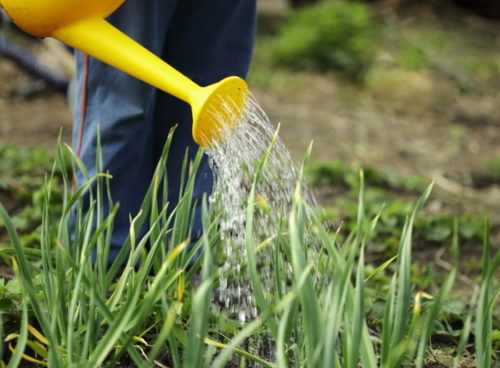
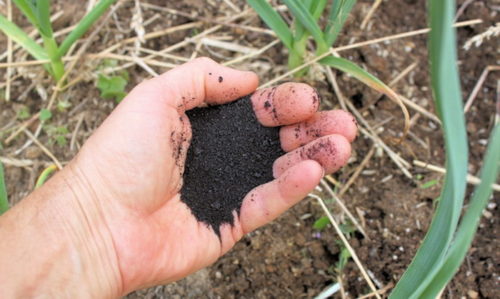

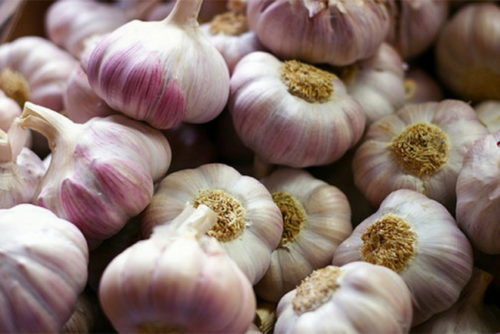
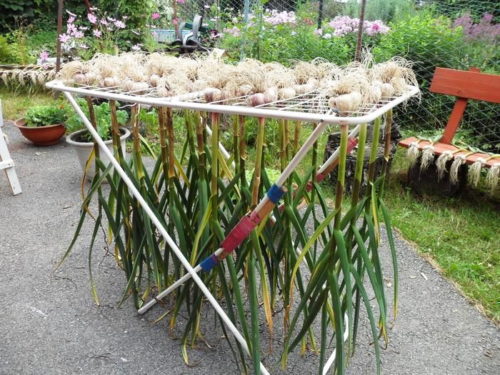
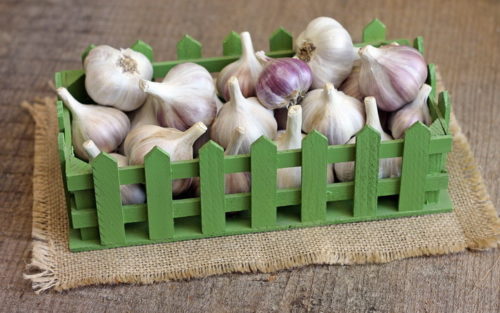












 Start a discussion ...
Start a discussion ...